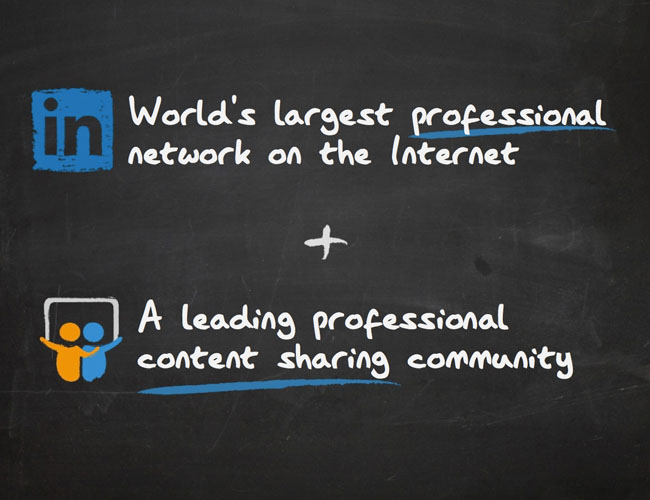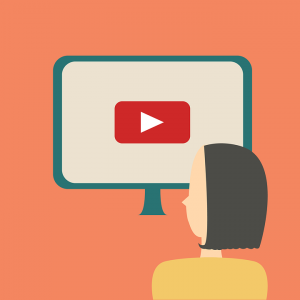Give your hit presentation a second life by using these five methods and tools to help publicize your work!
Congratulations. You’ve done it. The big presentation at the big conference is over. You’ve impressed your colleagues and peers with your research. The design of your presentation popped because of your beautiful illustrations and data visualizations. Your elocution was perfect. You answered every question thoughtfully and cordially — even the annoying ones. You even got everyone to laugh at your jokes.
You’ve done great work. Enjoy the moment. But be ready to get back to work on your presentation tomorrow: That’s when you get to turn your hit presentation into the grant or tenure-track chair you’ve been chasing.
Give Your Presentation a Second Life Online
If you’ve spent hours compiling a slide deck, the end of a presentation can be deflating. You’ve spent all this time creating a succinct distillation of your ongoing research, but it won’t have a second life like a paper would.
A good paper lives on in the journal where it was published, is cited frequently, and maybe even anthologized. Presentations, on the other hand, seem ephemeral: They don’t necessarily live on outside the room where you spoke.
That doesn’t have to be the case. You have several ways of preserving a good presentation — and you might want to use all of them.
SlideShare

LinkedIn’s presentation sharing platform is vast. It has presentations on almost every conceivable subject. The best-performing presentations — which tend to be on business subjects, given the site’s heritage — have hundreds of thousands of views, making them the professional equivalent of a viral YouTube video.
Your presentation doesn’t need to reach that level of readership, but it could if you share it and promote it well. At the very least, you’ll have a way to add an outstanding presentation to your CV. You’ll also be able to pitch future conferences based on your greatest hits by sending organizers a link.
Your Personal CV and Institution’s Website
Always post a strong presentation to your CV. You probably have several CVs: your personal website, your profile on your institution’s website, and your LinkedIn. Post a standout presentation on each. Link freely between each profile — that will help your name rank in searches for you and your subject area.
YouTube
TED Talks might be intellectually dubious — especially when they’re compared to a presentation at an academic conference — but they are popular for a reason.
Videos can engage an audience that are tangentially interested in your subject area. As you know, that’s one of the main reasons to hold an academic conference in the first place.

I strongly recommend using YouTube alongside SlideShare, because they augment each other. A good PowerPoint will only go so far, even if you use the built-in record-a-presentation tool. A video can capture the energy you draw from an engaged audience, any interesting digressions you may discuss, and all of the good and bad questions you answer with grace and poise.
You also might draw people who wouldn’t normally be interested in your area of expertise or even your field. A YouTuber could conceivably stumble onto your presentation from an autoplay link during a deep dive — and they might follow along with the SlideShare link you’ve provided in the description of the video.
Get to Know Your New Colleagues
This is a small facet of what you already know: You need to network intentionally at conferences. If you’ve succeeded in your presentation, you’ll have no small amount of people vying for your attention.
Speak to each of them in person, if you can. But if you can’t talk during lunch or they’re not the bar-going type, you can collect a colleague’s card and thank them for lending you their ears. When you get home, send everyone an email using those cards you collected.
A personal note is best, but you can send a brief, copied and pasted email if you’re short on time. Also thank the organizers of the conference — but for that, make sure you spend some time and effort crafting a substantial email. A card or mailed letter might even be appropriate.
After you’ve sent your missives, find whatever new colleagues you can on social media to keep conversations going informally and build rapport.
Find the Seeds of Your Next Presentation

Your next presentation will come up sooner than you think: As you know, every institution’s calendar is relentless, especially if you’re in the middle of research.
So when you send out your networking emails, ask your colleagues for criticism. Find out what did well, what missed the mark, and by how far. Peer review can make you a better presenter, too.
Plus, if you solicit advice, you’ll create truer bonds than you would by making your presentation from on high. You might have noticed that academics can be frosty and haughty. You — and your presentation, research, and teaching — can stand out of you’re frank and approachable.